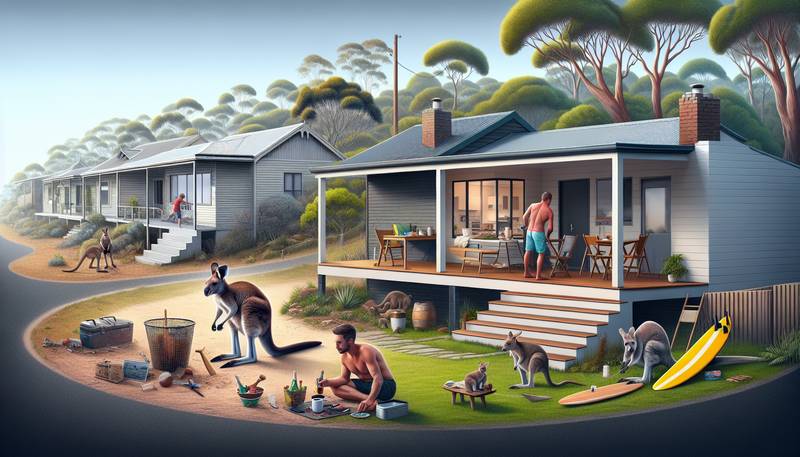From the Bush to the Burbs: The Evolution of Australia's Residential Communities

A Whole New World of HousingAustralia has always been a land of contrasts. Where else can you find a kangaroo casually hopping by as a surfer waxes his board nearby? But when it comes to residential communities, the evolution is just as wild, albeit with fewer kangaroos. From the rustic charm of bush shacks to the chirpy suburbs full of BBQs and backyard cricket, the evolution of housing Down Under is as fascinating as a koala on espresso.In the early days, settlers set up camp in the bush, building humble abodes that would make even a minimalist cringe. These homes were less about comfort and more about survival—like a game show where the ultimate prize was just getting to sleep without being eaten by a crocodile. As cities began to grow and develop, the quest for shelter made a leap that would leave even the most daring of kangaroos impressed.From Shacks to McMansionsFast forward to the modern era and you'll find that the quaint bush homes have been replaced (or outclassed) by sprawling McMansions, equipped with more bathrooms than necessary and kitchens that look like they belong in a cooking show. Who knew the average Australian family needed a wine cellar the size of a small car?But it’s not just about size; it’s about style. The architectural landscape has also witnessed a surge of trends that could make a fashionista weep. From the eco-friendly designs that look like they belong in a sci-fi movie to the Good Old Aussie Look that screams ‘I’m just like your uncle Bob but with a shiny new roof,’ the options are as diverse as the land itself.Suburbs: Where Community BloomsSuburban life is often painted as a dull existence, but in reality, it’s a vibrant mix of tradition and innovation. It’s a place where the BBQ is fired up every Sunday, and neighbors engage in a friendly (or not-so-friendly) rivalry over whose lawn is greener. You might even say that it’s the little things—like knowing your neighbor's dog’s name—that make suburbia feel like a home.Of course, no suburb is without its quirks. There’s always that one family who decorates for every holiday with enough lights to guide a plane safely to the runway. And then there’s the sound of lawnmowers in the morning, a symphony of suburban life that would make Beethoven reconsider his career choices. Urban Planning: The Good, The Bad, and the AwkwardWhen it comes to urban planning, Australia has faced its fair share of challenges. There are areas where the infrastructure seems to have been designed by a group of six-year-olds after a sugar rush. Roundabouts that make you question your sanity, roads that seem to lead nowhere, and traffic lights that appear to exist solely to test your patience are just part of the package deal.Yet, amidst the chaos, there’s progress. Innovations in community planning aim to create connected neighborhoods where residents can walk to the coffee shop without needing a GPS. These designs often feature parks, cafes, and even the rare unicorn—a public swimming pool. Embracing Diversity in Living PatternsAustralia is not just a melting pot; it's more like a rich stew with flavors from every culture simmering together. This diversity is reflected in its residential communities. From vibrant ethnic enclaves that celebrate festivals with enough color to make a rainbow look beige to modern developments that embrace sustainable living, the evolution is far from boring.With an increasing number of people choosing to live closer to the city, there’s been a rise in apartment complexes that promise a rooftop garden and a view of the skyline—if you squint hard enough. Building Bridges, Not WallsAs communities continue to evolve, one thing remains clear: the essence of Australian residential life is about connection. No one really wants to live in a bubble (unless that bubble is made of AirPods while listening to a great podcast). The trends emerge, the architectural styles shift, but the core idea—creating a place where people feel they belong—remains unwavering.Homes are evolving, but at the end of the day, it's all about where we hang our hats (and occasionally lose them in the backyard). So, whether in the bush, the suburbs, or the bustling city, the journey of Australian residential communities is just getting started. It’s a House Party!In the grand scheme of things, housing trends might shift like the sands of the beach, but the human desire for connection stays constant. As communities develop and residents thrive, those homes—be they chic city flats or cozy bush retreats—will always be more than just four walls. They're the place where every broken lamp and mismatched couch tells a story, and where memories are built, one BBQ at a time.
|
|







